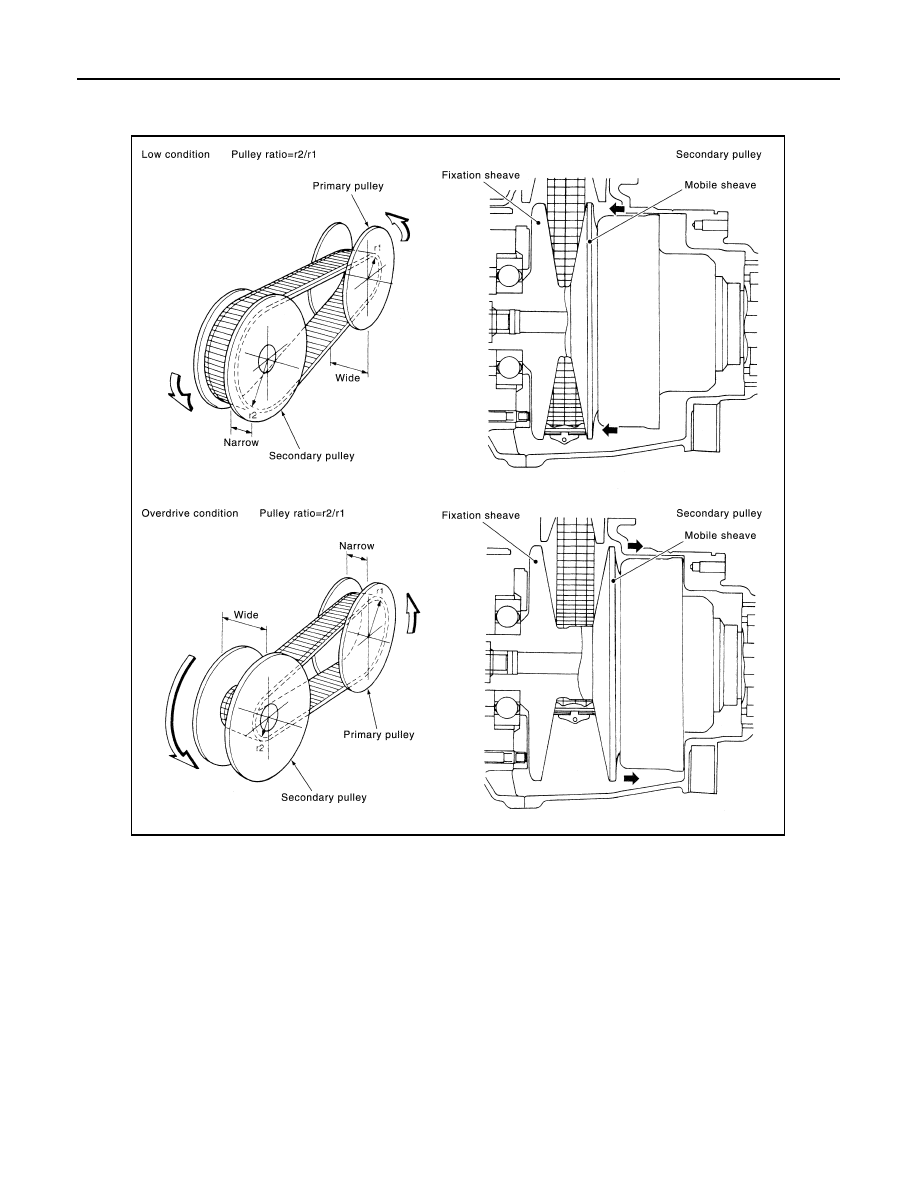Content .. 1294 1295 1296 1297 ..
Nissan Juke F15. Manual - part 1296

TM-374
< SYSTEM DESCRIPTION >
[CVT: RE0F10D]
STRUCTURE AND OPERATION
The movable sheave slides on the shaft to change the groove width of the pulley. Input signals of engine load
(accelerator pedal opening), primary pulley speed and secondary pulley speed change the operation pres-
sures of the primary pulley and the secondary pulley, and controls the pulley groove width.
FINAL DRIVE AND DIFFERENTIAL
The deceleration gears are composed of 2 stages: primary deceleration (output gear, idler gear pair) and sec-
ondary deceleration (reduction gear, final gear pair). All of these gears are helical gears.
JSDIA2429GB